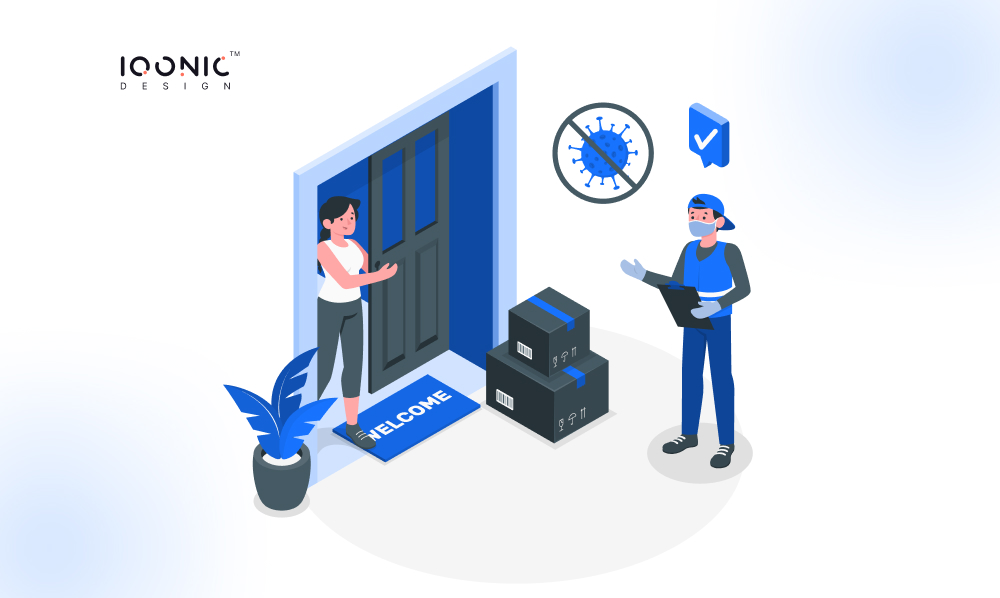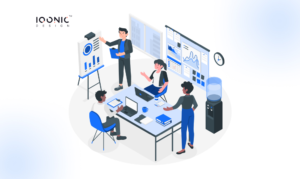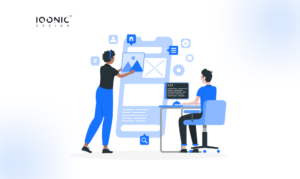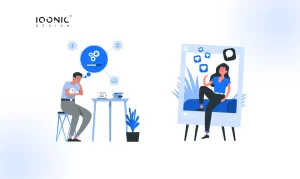
Medicine Delivery App Development: A Comprehensive Guide
In today’s fast-paced world, medicine delivery apps have emerged as indispensable tools, revolutionizing how we access essential medications. Recent events, such as the global pandemic caused by COVID-19, have underscored the growing importance of these apps. With lockdowns and restrictions in place, individuals faced unprecedented challenges in obtaining their prescribed medications. This crisis prompted a surge in the use of medicine delivery apps, which quickly became a lifeline for many.
This blog will explore medicine delivery apps’ significance, functionality, and impact on healthcare accessibility. Whether you’re a healthcare professional, an entrepreneur looking to venture into app development or a curious reader, this guide will provide valuable insights into these apps’ development and operation.
1. Understanding the Need for Medicine Delivery Apps
Accessing medications has historically been cumbersome, particularly for those with mobility issues, busy schedules, or living in remote areas. Patients often had to contend with long pharmacy queues, transportation hassles, or limited access to essential drugs. This posed a significant challenge to their health and well-being.
Medicine delivery apps address these challenges by offering a convenient and efficient solution. They allow users to browse, order, and receive their prescribed medications at their doorstep. This saves time and ensures timely adherence to prescribed treatments, which is crucial for managing chronic conditions.
Recent statistics reveal a substantial uptick in the use of medicine delivery apps, with a sharp increase during the COVID-19 pandemic. Many individuals, especially vulnerable populations, turned to these apps to minimize exposure to crowded spaces and reduce the risk of infection. These trends underscore the critical role of medicine delivery apps in enhancing healthcare access and ensuring the availability of medications when needed.
2. Market Analysis
The medicine delivery app market is experiencing remarkable growth, driven by the increasing demand for convenient healthcare services. With the proliferation of smartphones and the internet, accessing medications has never been easier. Several key factors contribute to the robust state of this market:
Rising Healthcare Needs:
The growing aging population and the prevalence of chronic diseases have heightened the demand for regular medication. Medicine delivery apps are bridging the gap, ensuring patients receive their prescriptions promptly.
Key Players:
Well-established players like PharmEasy, Netmeds, and 1mg dominate this market. These companies have gained significant market share through user trust and seamless services.
Market Share:
As of recent data, PharmEasy has a substantial market share, followed closely by other prominent players like Medlife and Apollo Pharmacy.
Potential for Growth:
The medicine delivery app sector shows immense potential for further growth. New entrants are expected to continue to join the market, providing innovative solutions and increasing competition.
Opportunities:
The market offers various opportunities for startups and entrepreneurs to enter the healthcare tech space. The growing demand for telemedicine integration, personalized healthcare experiences, and partnerships with healthcare providers creates a fertile ground for innovation.
3. Key Features of a Medicine Delivery App

A successful medicine delivery app must incorporate a range of essential features to ensure a seamless user experience:
User Registration:
The app should allow users to create accounts easily. This registration process should capture information for secure transactions and personalized experiences.
Prescription Upload:
To comply with healthcare regulations, the Medicine delivery app must provide a feature for users to upload their prescriptions. This ensures that medications are dispensed only against valid drugs.
Search Functionality:
An intuitive search function is crucial for users to find the necessary medicines quickly. This includes filters for drug names, generic equivalents, or disease categories.
Payment Options:
Diverse payment options, including credit/debit cards, digital wallets, and cash-on-delivery, ensure accessibility to a broad user base.
User-Friendly Design:
The interface should be user-friendly and intuitive, ensuring that even non-tech-savvy individuals can navigate the app comfortably. Clarity in design and straightforward menu options are essential.
Notification System:
Implementing a notification system to update users on order status, delivery times, and prescription renewals enhances user engagement and trust.
Incorporating these features facilitates convenient medicine ordering and helps build trust and loyalty among users. In particular, a user-friendly design and interface can set an app apart in this competitive market, ensuring a positive user experience.
4. Development Process
Medicine delivery app development is a complex process that involves several key steps to ensure its success. Here’s a summary of the development process:
Market Research and Planning:
The journey begins with thorough market research to understand user needs, competition, and legal requirements. Planning involves defining the app’s goals, target audience, and business model.
Design:
User experience (UX) and user interface (UI) design is critical. Prototypes and wireframes help designers visualize the app. A user-friendly design ensures smooth navigation.
Development:
Skilled developers bring the app to life using programming languages like JavaScript (for front-end) and Python, Ruby, or Java (for back-end). Frameworks like React Native, Flutter, or native development for iOS and Android are commonly used.
Testing:
Rigorous testing ensures the app’s functionality, security, and performance meet high standards. This comprises unit testing, integration testing, and user acceptance testing (UAT).
Launch:
The medicine delivery app is ready for launch after testing. It’s published on app stores (Google Play Store, Apple App Store) and promoted to reach the target audience.
Continuous Improvement:
The development process doesn’t end with the launch. Continuous improvement is crucial. Regular updates address bugs, add new features, and adapt to changing user needs. User feedback is invaluable for this phase.
Medicine delivery apps must prioritize security and data protection due to the sensitive nature of healthcare information. Compliance with healthcare regulations, such as HIPAA, is essential throughout development.
5. Technology Stack
The technology stack for building medicine delivery apps is crucial in their performance and functionality. Here’s an overview of the commonly used components:
JavaScript is commonly used for front-end development, while back-end development can involve languages like Python, Ruby, or Java. These languages offer versatility and robust libraries.
Programming Languages:
JavaScript is commonly used for front-end development, while back-end development can involve languages like Python, Ruby, or Java. These languages offer versatility and robust libraries.
Frameworks:
Frameworks like React Native, Flutter, or native development (Swift for iOS, Kotlin for Android) are preferred for medicine delivery app development. They enable cross-platform compatibility and faster growth.
Databases:
Databases like MySQL, PostgreSQL, or NoSQL databases (e.g., MongoDB) store user data, prescriptions, and medication information securely.
APIs:
Application Programming Interfaces (APIs) are essential for integrating with pharmacies, payment gateways, and third-party services. They facilitate real-time data exchange and payment processing.
Cloud Services:
Cloud platforms like AWS, Google Cloud, or Azure provide scalable infrastructure, ensuring the app can handle increased user demand.
Security Tools:
Security measures include encryption protocols (SSL/TLS), authentication mechanisms, and regular security audits to protect user data and maintain compliance.
Choosing the right technology stack is critical for the app’s performance, scalability, and security. APIs, in particular, enable seamless integration with pharmacies and payment gateways, ensuring a smooth user experience while maintaining data privacy and security.
6. Regulatory Compliance and Security
Regulatory compliance and robust security measures are paramount while medicine delivery app development, given the sensitivity of healthcare data and patient information.
Adhering to Healthcare Regulations:
Complying with healthcare regulations, such as the Health Insurance Portability and Accountability Act (HIPAA) in the United States, is non-negotiable. This entails safeguarding patient data, ensuring confidentiality, and maintaining the integrity of medical records.
Patient Data Privacy and HIPAA Compliance:
Protecting patient data privacy is achieved by implementing strong encryption protocols, role-based access control, and regular security audits. HIPAA compliance involves strict adherence to data security standards and secure electronic protected health information (ePHI) handling.
Security Measures:
To protect user information and transactions, robust security measures like two-factor authentication, secure socket layer (SSL) encryption for data in transit, and data encryption at rest are imperative. Vulnerabilities can be mitigated with regular software updates.
7. Marketing and User Acquisition
Promoting your medicine delivery app effectively is key to its success. Here are strategies to consider:
Building Trust:
Trust is paramount in healthcare. Ensure your app offers accurate medication information, secure transactions, and reliable delivery services. Display user reviews and ratings to build credibility.
Digital Marketing Techniques:
Leverage digital marketing channels such as social media advertising, search engine optimization (SEO), and pay-per-click (PPC) campaigns to reach a wider audience. Tailor your marketing to address pain points like convenience and safety.
Partnerships:
Collaborate with pharmacies, healthcare providers, and telemedicine services to expand your user base. These partnerships can enhance your app’s reputation and reach.
Referral Programs:
Encourage user loyalty through referral programs. Offer incentives for users who refer others to your app. Word-of-mouth referrals can be powerful.
By prioritizing trust-building, using digital marketing effectively, forming strategic partnerships, and implementing referral programs, you can successfully promote your medicine delivery app and gain a competitive edge in the market.
8. Challenges and Future Trends
Challenges:
The medicine delivery app industry faces stringent regulatory compliance, ensuring data security and high user trust. Additionally, fierce competition requires apps to innovate and differentiate themselves constantly.
Future Trends:
Evolving healthcare trends and technology will shape the sector. Telemedicine integration will become more seamless, offering patients a complete healthcare experience from consultation to medication delivery. AI-powered prescription verification will enhance accuracy and safety, reducing errors in medication dispensing. Furthermore, the adoption of blockchain for secure health data management may gain traction, ensuring data integrity and privacy.
9. Success Stories
PharmEasy:
PharmEasy’s rapid growth showcases the impact of medicine delivery apps. It streamlined medication access for millions in India, especially during the pandemic. The app’s user-friendly interface and quick delivery services garnered widespread acclaim, making healthcare more accessible.
Capsule:
In the United States, Capsule emerged as a game-changer. Their focus on exceptional customer service and same-day delivery reshaped the pharmacy experience. By prioritizing convenience and personalized care, Capsule improved medication adherence rates, positively impacting healthcare outcomes.
These success stories illustrate how medicine delivery apps have transformed healthcare delivery, providing convenience, accessibility, and improved patient outcomes. They demonstrate the immense potential for innovation and positive change in the industry.
Conclusion
In a world where convenience, accessibility, and healthcare are paramount, medicine delivery apps have emerged as a lifeline. This comprehensive guide has highlighted their significance in modern healthcare, addressing the challenges of medication access, ensuring data security, and adapting to evolving trends.
As we navigate an increasingly digital healthcare landscape, the role of these apps will only grow. If you’re considering venturing into app development, the medicine delivery sector presents exciting opportunities to make a real difference in people’s lives. By providing seamless access to essential medications, you can contribute to a healthier, more connected future in healthcare.
Unlock Success with Iqonic Designs: Your Trusted Partner in Medicine Delivery App Development!
Are you on a mission to create a game-changing medicine delivery app? Your journey starts here with Iqonic Designs-custom app development company, your go-to team for crafting exceptional mobile apps using Flutter. We’re not your typical development service; we’re your dedicated experts, committed to delivering tangible results.
Who We're Here to Help:
1. Innovative Startups:
If you’re an aspiring entrepreneur with a groundbreaking idea for a medicine delivery app, rely on us to transform your vision into a reality.
2. App Development Agencies:
Collaborate with us to elevate your Flutter app development capabilities, all while staying within a reasonable budget.
3. Small and Medium Enterprises (SMEs):
We’re the dependable partner SMEs can trust to create top-notch mobile app projects without disrupting their core operations.
What Sets Us Apart:
User-Centric Design (UI/UX):
Our designs blend eye-catching visuals with practical functionality, ensuring your app engages users and provides a seamless experience.
Flutter Expertise:
We specialize in developing cross-platform mobile apps that are visually stunning, highly efficient, and adaptable.
Robust Backend and APIs:
A robust backend is the foundation of any successful app. We excel in creating powerful APIs and backend systems to support your app’s operations.
Compelling Landing Pages:
Your app’s digital storefront matters. We create compelling landing pages that communicate your app’s value proposition to potential users.
Cloud Hosting and App Deployment:
Leave the technical intricacies to us. We manage cloud hosting and handle the complexities of app deployment, ensuring your app reaches users on multiple platforms.
Reliable Support & Maintenance:
Every successful app needs ongoing updates to keep up with evolving technology. Count on us for consistent support and maintenance, keeping your app up-to-date.
When developing a medicine delivery app, Iqonic Designs, your trusted IT service agency, is your ultimate partner. We’ll guide you through every step of the process, providing valuable insights into revenue models and ensuring your vision becomes a reality. Let’s make your dream medicine delivery app a resounding success!






